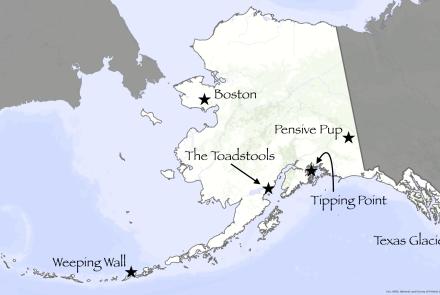The Missing Night
On the evening of June 30, 1908, there was no night at all in central Siberia. Early that morning there had been a huge explosion in the air above the basin of the Stony Tunguska River, about 1000 kilometers north of Lake Baikal. Trees beneath the blast were flattened in an area more than 50 km across, and the heat of the explosion started forest fires that raged for several days.
Even yet it is not certain what happened that morning. Most of the evidence points toward the explosion of a giant meteoritic mass high above the taiga swamplands. Or it might have been a comet. Two almost science fiction ideas are that Siberia was struck by a "black hole" or a piece of "antimatter." A recent book suggests the explosion was that of a malfunctioning nuclear-powered spacecraft from another world.
Whatever the cause, the sky was lit up each night for more than a month afterwards. Massive glowing silvery clouds and brilliant, colorful sunsets were seen in Europe and Asia. The "white night" of June 30 was the brightest, but strange twilights were observed until the end of August that year.
Evidently the cause of the bright summer nights of 1908 was extensive dust debris from the explosion circulating in the high atmosphere. During summer nights at the higher latitudes the sun still shines on the upper air, even if there is darkness at the ground.
If this is the correct explanation, the dust should have circulated so as to cover Alaska and perhaps Canada. Yet no reports of strange nights in 1908 came from North America.
There are still people in Alaska who were here in 1908 and might remember seeing strange nights or twilights that year. Entries in diaries also could be a source of information. We would appreciate hearing from anyone with information on Alaskan sightings. Since northern Alaska is light in late June, any early sightings of the phenomenon probably were in southern Alaska. In late July or August strange twilights could have been seen in northern Alaska also.



